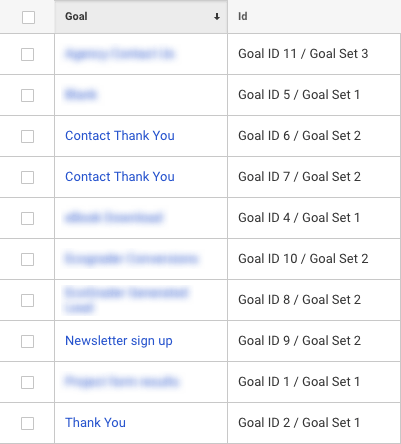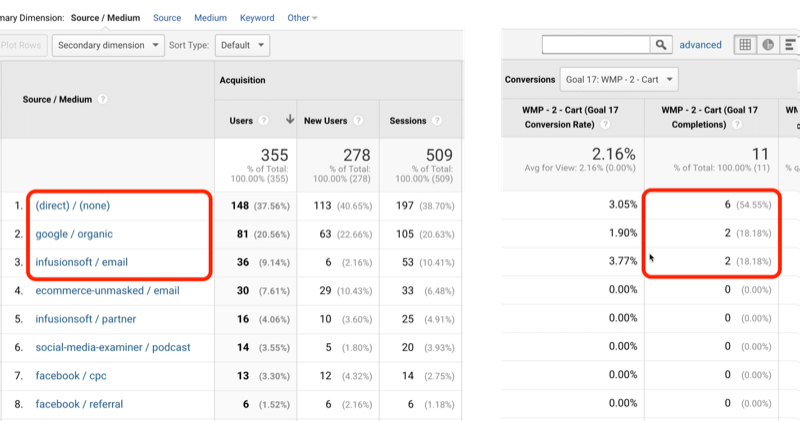Comprehending What Data Is Google Analytics Goals Unable to Track
Comprehending What Data Is Google Analytics Goals Unable to Track
Blog Article
Debunking Google Analytics Limitations: Discover What Data Goals Can not Track
In the realm of electronic analytics, Google Analytics stands as an effective tool that gives important understandings right into site efficiency and user habits. From the intricacies of individual communication with dynamic material to the intricacies of cross-device user journeys, these restrictions lost light on areas that may continue to be obscured from standard analytics perspectives.

Individual Interaction With Dynamic Web Content
Individual interaction with vibrant content plays an important function in understanding customer actions on web sites and optimizing the overall customer experience. Dynamic content describes aspects on a webpage that can alter without the demand for a full web page reload. This consists of interactive elements such as pop-ups, sliders, types, and video clips that react to individual actions in real-time. By tracking user communications with vibrant material, internet site proprietors can gain important insights into individual interaction, choices, and habits.
Google Analytics offers various devices to track customer communications with dynamic material, such as event monitoring and digital pageviews. Occasion monitoring enables you to keep track of particular user activities, like clicking a switch or enjoying a video, offering data on just how users connect with dynamic elements. Virtual pageviews can be used to track communications that do not lead to a new page load, offering an extensive view of user interaction with vibrant material. By assessing this data, site proprietors can make educated decisions to boost customer experience and drive conversions.
Cross-Device User Journeys
Exactly how can modern analytics tools track the facility paths customers take across multiple tools in their online trips? Cross-device user journeys offer a substantial difficulty for tracking and evaluating customer actions accurately. As customers interact with web sites or applications making use of different tools such as desktop computers, smartphones, and tablet computers, it becomes important to understand just how they move between these platforms to enhance user experience effectively.
Google Analytics faces restrictions in tracking cross-device individual journeys due to privacy worries and technological restraints - what data is google analytics goals unable to track. While it can give understandings right into specific tools' communications, tracking a seamless user trip across several gadgets stays a difficulty. This limitation can result in incomplete information and fragmented individual insights, making it difficult for companies to create a unified view of the consumer trip
To resolve this problem, organizations can utilize advanced analytics tools that offer cross-device monitoring capabilities, permitting them to gain an extra holistic understanding of user actions. By leveraging these tools, services can connect the void in tracking cross-device user journeys and enhance their electronic techniques for a seamless customer experience.
Offline Conversions and Acknowledgment
As companies browse the difficulties of tracking cross-device user trips, another crucial element to consider is the world of offline conversions and attribution in the world of data analytics. While Google Analytics provides beneficial insights right into on the internet user actions, it fails when it concerns tracking conversions that happen offline. This constraint postures a significant difficulty for services that have both online and offline sales networks.
Offline conversions, such as purchases made in physical shops or via phone call facilities, are important to comprehending the complete consumer journey. Without the ability to associate these offline conversions to certain on-line communications, organizations may have a hard time to accurately gauge the impact of their electronic marketing efforts.
To resolve this space, services can explore alternative remedies such as incorporating CRM systems with online analytics devices or utilizing distinct discount codes that can be mapped back to online campaigns. By connecting the space in between online and offline data, services can gain an extra detailed understanding of their customers' actions and boost their overall advertising techniques.
Individual Customer Identification
In the realm of information analytics, the capability to accurately determine specific customers across numerous on-line touchpoints is a critical challenge for companies seeking to personalize and optimize their advertising and marketing strategies. While Google Analytics offers important insights into customer actions and communications, it drops short in allowing the identification of specific individuals due to privacy worries and technological limitations. Google Analytics utilizes special identifiers such as cookies to track user sessions and habits, yet these do not equate to determining individual customers in an individual sense.

Data From Secure Pages
Despite the increasing frequency of safe web pages on sites, acquiring data from these encrypted sources presents an one-of-a-kind obstacle for digital analytics systems like Google Analytics. Protect pages, shown by HTTPS in the link, encrypt information exchanged in between the user's web browser and the website's server to make certain privacy and protection. While this encryption is crucial this page for protecting sensitive details, it also positions constraints for tracking user habits and celebration analytics data.
Google Analytics deals with barriers in gathering thorough info from secure web pages due to the file encryption methods in position. As an outcome, certain information points such as reference sources, keyword searches, and even some user interactions may not be totally caught when individuals access a site through a safe and secure link. This restriction can affect the accuracy and efficiency of the data analysis, leading to voids in understanding individual behavior and choices on secure web pages.
To navigate this difficulty, digital analysts may need to explore alternate tracking approaches or take advantage of other devices particularly designed to gather insights from protected pages. By adapting methods to fit these restrictions, services can still obtain useful analytics in spite of the constraints presented by encrypted links.
Verdict
In final thought, Google Analytics has limitations in tracking customer interaction with vibrant material, cross-device user trips, offline conversions, private user recognition, and data from protected pages. In spite of its valuable understandings, Google Analytics may not give a full photo of user interaction across numerous touchpoints.
Individual interaction with dynamic content plays a crucial duty in comprehending user behavior on helpful site internet sites and optimizing the overall individual experience. By tracking individual communications with vibrant web content, website proprietors can gain useful understandings into user interaction, choices, and behaviors.
Google Analytics uses special identifiers such as cookies to track customer sessions and Discover More Here actions, but these do not correspond to determining specific customers in an individual sense.
As a result, specific data factors such as referral sources, keyword searches, and even some individual communications might not be totally captured when users access a site with a safe link.In verdict, Google Analytics has constraints in tracking customer communication with vibrant web content, cross-device user journeys, offline conversions, specific customer recognition, and information from safe and secure web pages.
Report this page